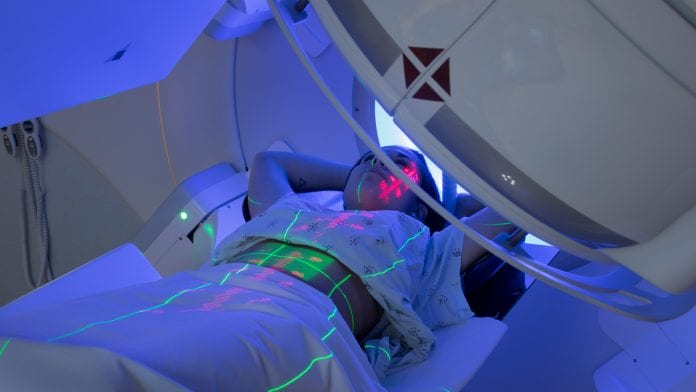
New accelerator-based technology developed with aim of reducing side effects of cancer radiation therapy by shrinking its duration from minutes to under a second.
Developed by the Department of Energy’s SLAC National Accelerator Laboratory and Stanford University, USA, the new technology has the goal of reducing the side effects of radiation therapy by vastly shrinking the length of a typical session.
A zap of radiation therapy
Now, having received crucial funding, the researchers can proceed with two projects to develop possible treatments for tumours, one using X-rays and the other using protons. The idea behind both is to target and blast cancer cells so quickly that organs and other tissues don’t have time to move during the exposure, much like taking a single freeze frame from a video. This reduces the chance that radiation will hit and damage healthy tissue around tumours, making radiation therapy more precise.
Billy Loo, an associate professor of radiation oncology at the Stanford School of Medicine explains: “Delivering the radiation dose of an entire therapy session with a single flash lasting less than a second would be the ultimate way of managing the constant motion of organs and tissues, and a major advance compared with methods we’re using today.”
PHASER
The project called PHASER will develop a flash delivery system for X-rays.
Over the past few years, the PHASER team has developed and tested accelerator prototypes with special shapes and new ways of feeding radiofrequency fields into the tube. These components are currently performing as predicted by simulations and pave the way for accelerator designs that support more power in a compact size.
In principle, protons are less harmful to healthy tissue than X-rays as they deposit their tumour-killing energy in a more confined volume inside the body. However, proton therapy requires large facilities to accelerate protons and adjust their energy. It also uses magnets weighing hundreds of tons that slowly move around a patient’s body to guide the beam into the target.
The researchers have the aim of creating innovative ways of manipulating the proton beam that will make future devices simpler, more compact and much faster.
Moreover, designed to be built into future compact medical devices, this new technology developed for high-energy physics could also help make radiation therapy more accessible around the world.
Making treatment available for more people
Today, millions of patients around the world receive only palliative care because they don’t have access to cancer therapy, Loo explains: “We hope that our work will contribute to making the best possible treatment available to more patients in more places.”
Therefore, the team is focusing on designing systems that are compact, power-efficient, economical, efficient to use in the clinical setting, and compatible with existing infrastructure across the globe.
























